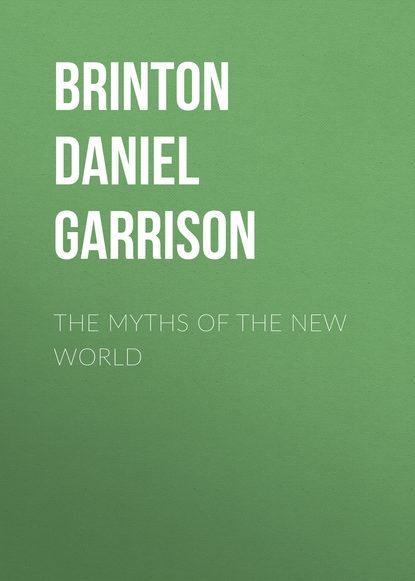По всем вопросам обращайтесь на: info@litportal.ru
(©) 2003-2024.
✖
The Myths of the New World
Настройки чтения
Размер шрифта
Высота строк
Поля
Ibid., Dec. iii., lib. x. p. 202.
105
Florida was also long supposed to be the site of this wondrous spring, and it is notorious that both Juan Ponce de Leon and De Soto had some lurking hope of discovering it in their expeditions thither. I have examined the myth somewhat at length in Notes on the Floridian Peninsula, its Literary History, Indian Tribes, and Antiquities, pp. 99, 100: Philadelphia, 1859.
106
Sahagun, Hist. de la Nueva España, lib. iii. cap. iii.
107
Le Livre Sacré des Quichés, Introd., p. clviii.
108
Memorial de Tecpan Atitlan, in Brasseur, Hist. du Mexique, i. p. 167. The derivation of Tulan, or Tula, is extremely uncertain. The Abbé Brasseur sees in it the ultima Thule of the ancient geographers, which suits his idea of early American history. Hernando De Soto found a village of this name on the Mississippi, or near it. But on looking into Gallatin’s vocabularies, tulla turns out to be the Choctaw word for stone, and as De Soto was then in the Choctaw country, the coincidence is explained at once. Buschmann, who spells it Tollan, takes it from tolin, a rush, and translates, juncetum, Ort der Binsen. Ueber die AztekischenOrstnamen, p. 682. Those who have attempted to make history from these mythological fables have been much puzzled about the location of this mystic land. Humboldt has placed it on the northwest coast, Cabrera at Palenque, Clavigero north of Anahuac, etc. etc. Aztlan, literally, the White Land, is another name of wholly mythical purport, which it would be equally vain to seek on the terrestrial globe. In the extract in the text, the word translated God is Qabavil, an old word for the highest god, either from a root meaning to open, to disclose, or from one of similar form signifying to wonder, to marvel; literally, therefore, the Revealer, or the Wondrous One (Vocab. de la Lengua Quiché, p. 209: Paris, 1862).
109
Ximenes, Or. de los Indios, p. 80, Le Livre Sacré, p. 195.
110
Garcia, Origen de los Indios, lib. iv. cap. 4.
111
Compare the German expression sich orientiren, to right oneself by the east, to understand one’s surroundings.
112
Hawkins, Sketch of the Creek Country, p. 80.
113
See Jacob Grimm, Geschichte der Deutschen Sprache, p. 681
114
De Smet, Oregon Missions, p. 352.
115
Bressani, Relation Abrégé, p. 93.
116
Venegas, Hist. of California, i. p. 91: London, 1759.
117
Cogolludo, Hist. de Yucathan, lib. iv. cap. iii.
118
Alexander von Humboldt has asserted that the Quichuas had other and very circumstantial terms to express the cardinal points drawn from the positions of the son (Ansichten der Natur, ii. p. 368). But the distinguished naturalist overlooked the literal meaning of the phrases he quotes for north and south, intip chaututa chayananpata and intip chaupunchau chayananpata, literally, the sun arriving toward the midnight, the sun arriving toward the midday. These are evidently translations of the Spanish hacia la media noche, hacia el medio dia, for they could not have originated among a people under or south of the equatorial line.
119
Catlin, Letters and Notes, i., Letter 22; La Hontan, Mémoires, ii. p. 151; Gumilla, Hist. del Orinoco, p. 159
120
On the worship of the cross in Mexico and Yucatan and its invariable meaning as representing the gods of rain, consult Ixtlilxochitl, Hist. des Chichimeques, p. 5; Sahagun, Hist. de la Nueva España, lib. i. cap. ii.; Garcia, Or. de los Indios, lib. iii. cap. vi. p. 109; Palacios, Des. de la Prov. de Guatemala, p. 29; Cogolludo, Hist. de Yucathan, lib. iv. cap. ix.; Villagutierre Sotomayor, Hist. de el Itza y de el Lacandon, lib. iii. cap. 8; and many others might be mentioned.
121
Rivero and Tschudi, Peruvian Antiquities, p. 162, after J. Acosta.
122
Loskiel, Ges. der Miss. der evang. Brüder, p. 60.
123
Hawkins, Sketch of the Creek Country, p. 75. Lapham and Pidgeon mention that in the State of Wisconsin many low mounds are found in the form of a cross with the arms directed to the cardinal points. They contain no remains. Were they not altars built to the Four Winds? In the mythology of the Dakotas, who inhabited that region, the winds were always conceived as birds, and for the cross they have a native name literally signifying “the musquito hawk spread out” (Riggs, Dict. of the Dakota, s. v.). Its Maya name is vahom che, the tree erected or set up, the adjective being drawn from the military language and implying as a defence or protection, as the warrior lifts his lance or shield (Landa, Rel. de las Cosas de Yucatan, p. 65).
124
Squier, The Serpent Symbol in America, p. 98.
125
That these were the real views entertained by the Indians in regard to the brute creation, see Heckewelder, Acc. of the Ind. Nations, p. 247; Schoolcraft, Ind. Tribes, iii. p. 520.
126
Egede, Nachrichten von Grönland, p. 156.
127
Voiages aux Indes Occidentales, pt. ii. p. 203: Amst. 1722.
128
Beverly, Hist. de la Virginie, liv. iii. chap. viii.
129











